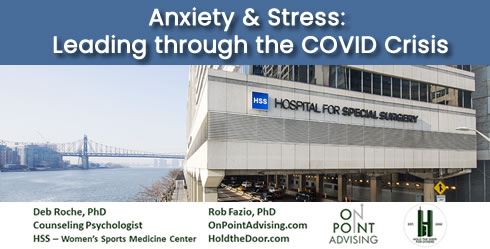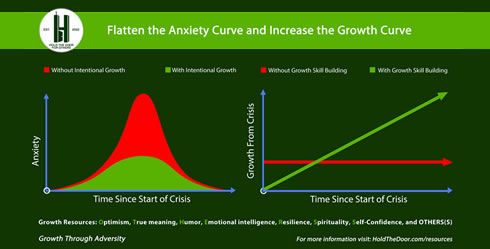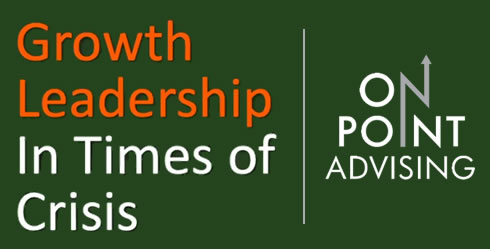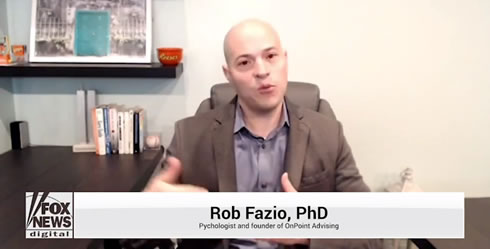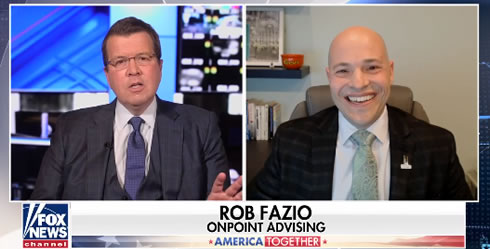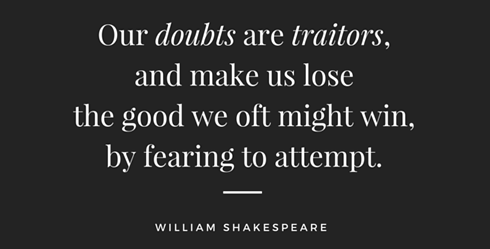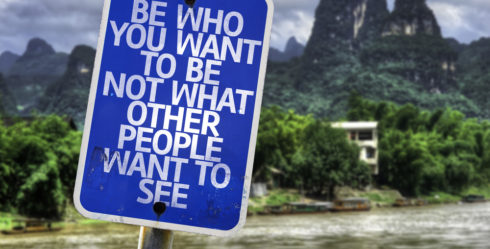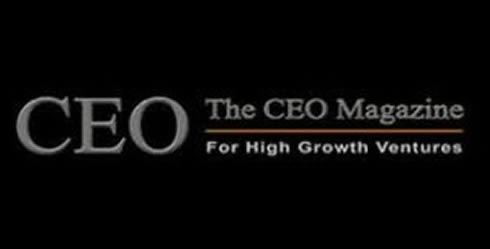“If you don’t choose to do it in leadership time up front, you do it in crisis management time down the road.” — Stephen Covey
Robert J. Fazio, PhD
Jason M. Briggs, MA
Is your dad home yet?
No, we haven’t heard from him.
How could that be? He lead us out of the building. He was holding the door for all of us and making jokes to calm us as we walked the stairs.
My (RF) dad was not a “Leader” as most of us would describe a leader. He was a quiet, humble man. For some reason on September 11th, 2001 he decided to become a leader. In the last minutes of his life he chose to put others first and make staying on the 99th floor of the World Trade Center South Tower not an option. He lead people out of harms way and found a way in the moment to influence them to leave, even when they were being told to stay. His actions have inspired me and many of my family, friends, and colleagues to start a nonprofit organization in his honor, Hold The Door For Others. We empower people to grow through loss and adversity and achieve their dreams.
So what does this all have to do with leadership and consulting? Good question. We are about to show you. Crises happen and they have a tremendous effect on organizations and their people. A consultant who can guide a leader to become a growth catalyst rather than a crisis manager is very valuable. Throughout this article we will present to you examples of how prevalent crises are and some of the most effective ways to partner with leaders so they can inspire people to grow through the crisis. We have also spoken with two seasoned consultants, Dr. Paul Ofman and Dr. Carey Stevens, who were willing to take the time to talk with us about consulting in times of crisis and large-scale change. Much of what we will present to you is from the experiences and research we have done related to Hold The Door For Others over the past 4 years.
We use the term Progressive Crisis Leadership (PCL) because our emphasis is on growth (i.e. business results, leadership capability, productivity) before, during, and after crisis as opposed to survival. Too often managers focus on putting out fires rather than being able to anticipate and prevent them. Over the years people have come to the conclusion that many crises are preventable and just as many are caused by human error.
For the purpose of this article, we define crisis as any event or nonevent that is perceived as a threat to the productivity of a system, an organization, or an individual and those who interact with them. Some examples of nonevents that can be crises are not receiving funding and a deal or transaction not being pulled through.
Just like there is a clear distinction between management and leadership, there is a difference between crisis management and PCL. PCL is not about just controlling the crisis and limiting negative impact. PCL has a philosophy of growth through crisis. Organizations, like individuals, have the potential to grow especially in times of crisis and extreme transition. Crises provide organizations an opportunity to examine their talent and ability to deal with adversity.
One example of an organization thriving despite adversity is Sandler O’Neill and Partners, L.P. (Freeman, Hirschhorn, & Maltz, 2003). Sixty-six of 171 employees of the organization were killed by the Terrorist Attacks of September 11th. On September 17th, 2001 a press release from the firm was misunderstood and CNBC announced that the firm would not remain in business. The exact opposite was true. In spite of the great adversity and losses the firm faced, “no client deals were lost, two months after the attack the firm was profitable again, by May 2002 profitability and revenue recovered to pre-911 days and continued an upward trend and a new business underwriting an annualized $23 billion in initial public offerings and a second new business in preferred stocks was developed” (Freeman et al., 2003 p. 2). In addition, the firm provided care, salaries, bonuses, and benefits to the families of the decreased. This firm’s leadership was able to find a way to pull people together and rally around a common vision. The leaders were able to create new business as a result of the catastrophic events of September 11th.
Thus far we have presented information and definitions about leading in times of crisis, but why is it important and why pay attention to leadership abilities specific to crisis situations? Crises have a tremendous impact on organizations and people. When unexpected events happen, there is the potential for both disaster and growth. Crises act as magnifiers and have the ability to intensify negative attributes of people and organizations as well as provide an opportunity for people to grow and utilize new skills. Some of the statistics related to crises and organizations’ inability to respond in a positive manner are staggering.
Leaders typically get to their executive levels by being confident and optimistic. Often, this confidence and positive outlook does not allow for leaders to think of what may happen and when. According to Augustine (1995), 89% of Fortune 500 CEO’s were reported to see crises as inevitable, 97% are confident that they would perform well if a crisis occurred, yet only 50% have a crisis plan in place.
According to Marsh & McLennan’s (2003) research on crisis readiness:
- An organization will face a crisis every 4-5 yrs.
- A CEO can expect to manage at least one crisis in his/her tenure.
- 81% of CEOs say their companies are vulnerable to serious business disruption due to a crisis.
- Many firms (e.g. 50% of global 2000) have not fully tested their crisis management plans that do exist.
In a study completed by AT&T (2005):
- Almost two-thirds of companies that suffered a disaster experienced lost business.
- 16% lost between $100,000 and $500,000 per day and 26% admit they don’t know how much it cost their company per day.
- Fewer than half of the companies that have had business interrupted by a disaster have updated their business continuity plans in the past 6 months.
Furthermore, the US Department of Labor estimates 40% of small businesses never reopen after a major disaster.
Different Types of Crisis
Organizational crises come in many different shapes, sizes, and forms. Leaders need to be highly aware of what different types of crises look like, and how to act accordingly. If we look at crisis events on a macro level, we can generally put them into one of two pots: sudden crises – those crises that blindside management and typically give no warning, and emerging crises – those crises that originate as small sparks, and can easily snow ball into catastrophes. Many times, crises can rapidly develop because management either blatantly ignores red flags, or is so detached from the “big picture” that the situation evolves into a major crisis event.
Sudden crises can potentially be the most crippling in nature, as these events many times leave organizations feeling helpless due to a lack of preparedness or readiness for the event. In many cases, sudden crises often materialize as natural disasters such as the devastating effects of Hurricane Katrina, or terrorist attacks such as the events that took place on 9/11. Other examples of sudden crisis events include product tampering, workplace violence, and sabotage. Company stakeholders and the general public are more likely to blame the effects of sudden crisis events on external factors such as extreme weather, outside criminal behavior, or technology hic-ups. Therefore, organizations suffering from sudden crisis will more likely receive a greater level of empathic support due to the fact that many crises of this nature are not directly related to the fault of the company or management within.
However, stakeholders and the general public generally view emerging crises more negatively. Since these crises often send out warning signals before a significant event occurs, the blame is generally placed on the leaders or management within the organization. If these snowballing crises aren’t attended to in an efficient manner, the firm’s internal problems will soon bleed out into the public, causing exponential crisis escalation. Some common examples of emerging crises are product defects, rumors/scandals, sexual harassment, and labor disputes. Generally, as a result of these crises, firms typically suffer from more damage to their reputation than those who experience sudden crises (James & Wooten, 2004).
Overview of Thought Leaders and Their Main Philosophies
“The only safe ship in a storm is leadership.” –Faye Whattleton
Many leaders today have a lackadaisical attitude toward the possibility of a crisis situation affecting their company. Others realize that crisis may very easily knock on the door of their organization. What sets the best leaders apart, are those that actively take steps to not only anticipate, but also prepare for potentially crippling events of all kinds.
There’s much literature today suggesting core competencies and action plans that describe the best “crisis leaders”. For example, ensuring stakeholder/public trust, strong communication, quick decision-making ability, macro perspective, challenging the status-quo, identifying organization vulnerabilities, and an emphasis on growth/learning are all competencies that describe the most effectual crisis leaders. The best leaders are able to put aside their idealistic view of their organization, and actively process both criticism and feedback from key players within all levels of the system. The ability to step out of one’s comfort-zone, and think about the “bad things” that may happen in the future is invaluable when preparing for crisis. Many of today’s leaders have so much on their plate, that anticipating negative events is not only viewed as a waste of precious time, but also threatens the moral of the stakeholders. By maintaining an anticipatory orientation, the system will become comfortable with attending to warning signs and actively taking steps to prepare for a damaging event. In short, when leaders run their organizations with the expectation that crisis is inevitable, those organizations will not only be more prepared for challenging debacles, but also rebound much more efficiently than those who pay little attention to crisis preparedness (James & Wooten, 2004).
Many researchers agree that the process by which leaders respond to crises on all levels is indicative of the organization’s overall success. For example, the way that leaders anticipate, respond in the moment, resolve the event, and learn from the experience directly affects the organization’s current and future well-being. Attending to warning signs and preparing for crises are foundational to warding off potentially damaging events. When crises occur beyond one’s control or perception, the ability to contain the situation and quickly process an action plan to respond is key. During this time, the literature suggests that leaders need to take courageous action, many times employing decisions that go above and beyond the typically prescribed actions for a given situation. The emphasis here is a quick, accurate assessment of the crisis event, followed by a corresponding quick action to accommodate the problem at hand. Throughout this process, strong communication is essential, so that all the stakeholders of the organization are aware of the situation (Simola, 2005).
After the immediate response to the crisis event has been given, progressive crisis leaders will put much emphasis on both short-term and long-term recovery efforts. This is the time where the ability to see the “big picture” is a necessary skill. We need not only attend to the immediate effects of an instilled recovery plan, but we also have to consider how our current plan will fair against future events as well. Finally, the ability to treat a crisis event as a learning experience, one that will change the way the organization as a whole reacts to future obstacles, is absolutely imperative. This process involves the synthesis of newly acquired information (what went wrong), and implementing change throughout all levels of the organization so that the experienced crisis event will not affect the system in the future (James & Wooten, 2004).
Again, the ability to facilitate change through a macro-lens is extremely important, as every entity of the organization is connected, and therefore needs to be equally equipped with both knowledge and new procedural measures. There’s some evidence to suggest that those leaders who have a more positive or optimistic view, will have a greater chance to see growth through a damaging crisis event. Apparently, those leaders who are generally more positive and resilient in nature, not only encourage positive outlooks in others, but also are more likely to see a broader view of the problem at hand, and respond through multiple courses of action on a macro-scale. What’s more, researchers in the field assert that those leaders who display resiliency and an optimistic outlook, will more likely learn new skills and knowledge from a crisis event, and increase their confidence for future setbacks (Fredrickson, Tugade, Waugh, & Larkin, 2003).
Crises don’t have to stifle an organization. In fact, by viewing a crisis event as an opportunity for learning and growth, the organization can actually gain strength by warding off future events that could cripple the company. This in turn will have a positive effect on employee moral, stake-holder trust, and financial prosperity.
Timing and Preparing for Crisis
“An ounce of prevention is worth a pound of cure.” – Ben Franklin
Resources, skills, competencies, and theories are only part of the equation related to growing through crisis. Timing is essential. Similar to many of the philosophies used in traditional therapy, it is not the event that causes loss of morale, sales, retention, revenue, and organizational growth, it is the response to the event. Having systems in place ahead of time, along with a variety of leadership approaches and communication strategies, greatly reduces the negative impact of a crisis on an organization and increases the probability of maintaining business results and growth.
The following figure presents an approach to facilitating growth before, during, and after an event.
Figure 1 – Fazio and Fazio (2005)
Timing of Growth Through Loss Interventions

“It’s much easier to face adversity when our backs are not turned to it.” — Brian G. Jett
The easier it is to predict a crisis, the better chance that an organization’s systems and leaders are aligned to deal with it. Below are some suggestions on what to pay attention to when determining if an organization is prepared for a crisis.
- Create an exhaustive list of the possible sudden or emerging crises that can happen (see pages 3 & 4 for examples).
- Rate each of the crises you have listed on a scale of 1(low) –to 10(high).
- How likely is each of them to occur?
- What would the magnitude of the impact be on the organization?
- How ready is your organization to deal?
- How aware is your senior leadership of potential crises? How can you educate them?
- What are the organization’s vulnerabilities?
- Is there a crisis leadership team in place?
- Do you have a succession plan for your executives?
- Do you have relationships with people in the media?
- Is there a person within the organization that has experience with dealing with the media?
- Do you have an employee assistance program?
Resources That People Need to Grow Through Crisis
“Of all the virtues we can learn, no trait is more useful, more essential for survival, and more likely to improve the quality of life than the ability to transform adversity into an enjoyable challenge.” —Mihalyi Czikszentmilaly
Unfortunately, crisis is a word that has become all too common in the world of organizational leaders. However, on the bright side, there’s much opportunity within crisis itself, as we can actually grow through traumatic experiences by becoming aware of and practicing key resources to help us grow from loss. If leaders of today do not choose to adopt an orientation that seeks growth through adversity, how will our leaders ever advance themselves or the organizations they run, since adversity is inevitable sooner or later?
Luckily, social scientists have agreed upon ways in which both individuals and organizations can actually grow or thrive through loss of any kind. One approach based on research and experience that speaks to what people need in order to buffer trauma and grow, is the OTHERS(S) model (R. J. Fazio & L. M. Fazio, 2005). This particular model describes eight resources that empower people to grow through loss or adversity. The OTHERS(S) resources may equip people to grow through personal loss, such as the death of a loved-one, the loss of a job or promotion, or the dissolution of a marriage. The resources in the OTHERS(S) model are optimism/hope, true meaning, humor, emotional intelligence, resilience, spirituality, self-confidence, and OTHERS(S). The OTHERS(S) resources are briefly described below:
- Optimism and hope refer to a person’s ability to develop and maintain a positive attitude and hope even during challenging times.
- True meaning is your ability to make meaning of your losses and find purpose for the future.
- Humor is your ability to laugh and use humor to lighten the load of loss and adversity.
- Emotional intelligence is your ability to be aware of your emotions, connect with people, read emotions in others, and communicate your emotions to others.
- Resilience is your ability to adapt, bounce back, and respond with strength to adversity, loss, and challenge.
- Spirituality is what gives you the strength to live with loss and move forward.
- Self-confidence is your belief in yourself and your personal resources.
- OTHERS(S) ties all of your personal resources together, and emphasizes relationships. This resource is the most important by far. It is your ability to build relationships in your social-network, and heal through helping others.
Growth Consultants can aid individuals by helping them to develop competence within the OTHERS(S) resources. The process a Growth Consultant uses to facilitate growth in the above mentioned resources are Connect, Care and Challenge. When a Growth Consultant connects with someone, he/she strives to create a relationship that is based on mutual respect, client comfort, and is rooted in strong, deep interpersonal connections. Care involves treating your clients empathically, and letting them know that you genuinely care about their reality. Once Connect and Care are established in the relationship, Challenge can be introduced. By challenging our clients, we encourage them to increase their level of personal insight, and foster ways for them to challenge themselves. Challenge is all about letting your client know that you believe in them, and that they possess the power to help themselves (R.J. Fazio & L.M. Fazio, 2005).
When the model is used by individuals for self-development, three additional foundational resources should be included: self-connect (self-understanding), self-care, and self-challenge. These foundational resources help facilitate your level of competence in the eight OTHERS(S) resources. Although the OTHERS(S) resources mentioned earlier relate to individual growth, the spirit of the model can also be applied to an organizational setting, as the core of all organizations are indeed the individuals within.
Through the development and application of the OTHERS(S) resources, leaders may actually improve their business results and overall well-being of the people that make up their organization. By building skill-levels within the OTHERS(S) resources, individuals can become more resilient, optimistic, confident, communicative, and team-oriented, all of which will contribute to much higher levels of hardiness in the face of adversity. As a result, the business should be less prone to crumbling during tough times and have a greater chance to grow from the experience (R. J. Fazio & L. M. Fazio, 2005).
Hold The Door For Others feels that it is very important to be self-aware of one’s own competency level within the OTHERS(S) resources. After all, how can we grow from where we stand if we aren’t quite sure where it is we are actually standing? In essence, we need to be able to assess our current level of competency within each resource before we can decide which area we have to develop. In hopes of increasing one’s individual awareness of his or her competency level within the OTHERS(S) resources, Hold The Door For Others has developed an assessment called the OTHERS(S) Resources Competency Indicator (ORCI). The ORCI is a handy tool that will highlight your strengths and areas of development within the OTHERS(S) resources, as well as the three foundational resources, self-connect, self-care, and self-challenge. By assessing your current levels within each resource, you will be equipped with a clearer road-map to help you navigate through both your personal challenges, and those you face as organizational leaders (R. J. Fazio & L. M. Fazio, 2005).
Resources and Skills Necessary for Leaders to Empower an Organization to Grow Through Crisis and Transition:
“Leaders are those who know what to do next, know why that is important, and know what appropriate resources to bring to bear on the problem at hand. Then, through effective communication they influence others to follow.” — Barry Bowater
Preparation is a key element in protecting organizations from the potentially devastating effects of crisis events. One of the best ways a company can prepare itself is to be sure that its leaders are equipped with the resources proven to empower the organization to not only survive crises, but also grow through any crises or transitional periods.
Many researchers in the field agree that the most effectual crisis leaders possess the following personal resources:
- Ensures stakeholder and public trust
- Thinks about the big picture, and takes a broad perspective in problem solving
- Emphasizes growth – Conceptualizes how the organization can learn from crisis events
- Strong communicator and highly articulate
- Able to quickly process complex situations (and act accordingly)
- Acts courageously
- Identifies the organization’s weak-spots, and plans for future crises
- Open to criticism/feedback
- Future-minded
Of course we’re not suggesting that those leaders who possess the skills above will be immune to adversity; rather, those that both value and practice these resources should be more successful in containing and resolving a crisis event, and then leveraging the learning experience for the betterment of the whole organization.
Following are some personal resources that researchers in the field suggest are foundational to promoting organizational change through crisis events.
Ensuring public and stakeholder trust is a very important element of the equation. Employees and other key players in the organization yearn to feel both safe and informed about the company’s status in relation to a crisis event. When these components are unattended to, many times, employees of all levels and the public are left to come up with their own conclusions, which are not grounded in truth and therefore misinterpreted. Some ways that leaders can instill trust in their employees are: communicating expectations very clearly, setting high expectations of others, and always providing relevant information to both employees and the public about the status of a crisis situation (James & Wooten, 2004).
Creating a new corporate mindset is another important resource, as those who exhibit this skill are able to see the “big picture”. As such, leaders who make their decisions through a macro-lens are more likely to better serve their fellow employees and peers as well as those the business serves. A bi-product of using a macro-lens to make decisions and solve organizational problems is a reduced occurrence of crisis events, as the leader will have to consider many more variables and situational factors, as apposed to a more limited view of the predicament (James & Wooten, 2004).
The ability to identify organizational vulnerabilities helps leaders anticipate and plan for unexpected events. By being able to orient oneself with the fact that something can go wrong, and realize that one’s company doesn’t function within a bubble, leaders can actually plan for the future, as well as their respective role within those anticipated events.
Acting courageously and making quick informed decisions plays an important part in responding to crisis events. In an ideal situation, the leader will gather as much information from a variety of sources, then synthesize and make a decision based on the facts at hand. Leaders should always consider the long-term effects of their decisions before employment. In addition to making quick, informed decisions, effective progressive crisis leaders are courageous, and go above and beyond what’s typically prescribed for any given situation (James & Wooten, 2004).
One of the most important resources a crisis leader can possess is the ability to both learn and grow from adversity of any kind. Leader’s who practice this resource actively synthesize as much data from the experienced loss as possible, and use that information to not only protect the organization from a similar event in the future, but actually facilitate growth with in the organization on the macro level as a direct result of the crisis event. Essentially, the key mindset here is growth through adversity. By adopting this mindset, leaders view setbacks as opportunities for the company to grow, instead of excuses for the organization to flounder (Fredrickson et al., 2003).
Why does a Consulting Psychologist Make a Great Crisis Leadership Consultant?
“One who gains strength by overcoming obstacles possesses the only strength which can overcome adversity.” — Albert Schweitzer
While many leaders may not like to think about the things that could go wrong in their organization, hopefully one can see the benefit to both anticipating and preparing for future hurdles along the way. A great way to increase preparedness for future crises is to receive support from a specialist in the field. Consulting psychologists may serve as excellent catalysts for crisis prevention.
Consulting psychologists are very skilled in assessing the needs of organizations, which will help highlight specific areas of development. Simola (2005) suggested that psychologists may be able to point out cognitive distortions within the system that may have very limiting effects on crisis preparedness measures (e.g., “We haven’t had any major problems in the past”, or “We are too large for a crisis event to break us”). Consulting psychologists are particularly effective at not only spot-lighting irrational beliefs, but also encouraging clients to actively validate their beliefs and search for proof that both supports and refutes their statements.
Psychologists may also provide both education and training to organizational leaders, which will equip them for future crises. For example, crisis leadership consultants (CLC) may offer behavioral interventions and emotional coaching in hopes that leaders will gain confidence in one’s abilities in the face of a crisis. In addition, CLC may provide specific consultation emphasizing ways that leaders may anticipate future obstacles before they would directly impact the organization. Similarly, consultation may also spotlight the company’s strengths and areas of development, which will aid leaders with their anticipatory orientation toward future challenges (Simola, 2005).
Finally, consulting psychologists may be able to provide specialized coaching/consultation in various areas related to crisis prevention, preparedness, etc. In fact, CLC can coach leaders through crises in the moment, as well as assist them with how to respond after the event. An example of this might be specialized coaching emphasizing growth after a damaging incident. Many leaders may be able to see the value in growing through adversity, but very few may know how to actually practice the concept. Consulting psychologists may build core resources within leaders, enabling them to actually thrive from traumatic events.
We spoke with two seasoned consultants that work for top tier consulting firms. Both of the consultants have years of experience working with people and organizations in times of crisis and extreme change. Following is a summary of the conversations with both professionals.
Paul Ofman, PhD, MBA
Senior Consultant
RHR International Company
These are Paul Ofman’s personal thoughts and responses to the following questions.
What types of experiences have you had consulting with individuals or organizations in times of crisis?
I am trained as a Clinical Psychologist and in 1991 was working for the New York VA Medical Center. During this time the country was preparing for a big war in the Persian Gulf and anticipated many casualties. Our plan was to be proactive and prepare to help a new generation of soldiers exposed to trauma. Fortunately, the number of casualties during this war was not as expected. However, this training and philosophy taught me that there is something you can do—and need to do– proactively. You can put people in a better position to tolerate and live through traumatic situations.
During this time the APA and American Red Cross first agreed to partner-in-training and deploying psychologists to support Red Cross’ national disaster relief teams. I was among the first group of psychologists to respond to disasters and provide mental health support during disaster relief operations. For the past 15 years I have been part of the American Red Cross’ voluntary leadership.
Since then, I have had the opportunity to help by responding to major disasters such as: plane crashes, hurricanes, terrorism, building collapses, etc. These opportunities have brought me to some tough places. I started with providing and organizing direct services to those impacted by the disasters. Over time, I realized that I had a unique window into how individuals, families, communities, and organizations responded to these challenges—and how leaders could impede or facilitate coping at all levels.
While there are many opportunities to serve one’s community during crises, it is hard to get experience consulting to leaders during crisis times. Organizations know about crisis management from the contingency planning and public relations points of view because they have become part of a natural thought process. However, beyond those tasks, leaders are less aware of the special role they must play to enable their organizations to cope with the strains of sudden crisis—e.g. product failures, downsizing, restructuring, or being acquired.
What do you feel a leader needs during a crisis?
Based on my experiences observing and working with leaders in times of crisis, my colleagues at RHR International and I have identified a simple model of effective leadership behavior in times of crisis. The model has 5 aspects to it and speaks to the idea that people need to feel the positive presence and engagement of leaders during such times. These behaviors will seem as common sense to most and come naturally to emotionally intelligent leaders. The behaviors can apply in a small organization or across communities of millions.
Effective crisis leadership is first predicated by being an effective manager. It is important that when crisis emerges, leaders begin with their technical competency and keep the organization running. However, they can’t stop there.
They need to:
1) Touch – People need to know that leaders are visible and engaging them. Characteristics associated with Touch are warmth, support, reassurance, credibility, empathy and psychological awareness. It is about being available in an emotionally intelligent way – whether it is a CEO or a first-line supervisor.
2) Inform – People in times of change and crisis have a great need for information. Leaders need to communicate abundantly and redundantly. That communication is part of how you convey that you are in tune with people’s needs. A rule of thumb about informing: it’s best to answer a question before it is asked, it is good to answer when it is asked, and it is worst to not answer a question at all. Leaders that are experienced as too cautious and under-communicating, will come across as hollow and uncaring. Proactive communication is essential. Let people know when they are looking for guidance and direction.
3) Direct – In difficult times, people need direction. It is not about ordering them around and it is not just about being operationally focused. Direction includes the things that are important for people to do—and not to do during this time. For example, if a company is going to be acquired by another company, people may fear the future. Such times are stressful and distracting. However, the company still needs to deliver. Leaders need to help others remain aligned to objectives that were created before the crisis. In organizations, as in life, people want to look up to somebody. People want wisdom and sense of perspective.
4) Manage Expectations– Leaders should not over-promise. It is important to give people as accurate perspective as possible. Give people some basis to predict outcomes and a belief in leaders’ trustworthiness and honesty. Let people know, “we are working on that, we are talking about and will share as soon as we can.” Good practices are to under-promise and over-deliver. Allowing the trust and believability of leaders to erode is to lose influence at a time when it is particularly important.
5) Bind – Pull the organization together. Talk with people about common values, shared purpose and goals. Enhance and highlight the bonds of community the organization has had, helping people to see this still matters.
Together with my colleagues at RHR International, we have been able to apply this model globally. This simple model has been compelling in Bombay as in Boston. It will be beneficial to fine tune language in other countries, but the core messages and philosophies remain the same.
How is your process of consulting different when you work with a leader in times of crisis?
During a crisis, time is very compressed. Things need to happen more quickly than usual. Leaders need “to get it” and “get it” quickly and “get it right.”
RHR’s model of leadership behavior in times of crisis applies during times of big change. It could be a product failure, a series of re-organizations, a down sizing or an unexpected acquisition. We have also integrated RHR’s model of change management and this crisis model.
It is rare that a senior executive is interested in spending much time exploring their part in crisis leadership—before the crisis. Even when you have an established consulting relationship, there isn’t much of an opportunity to engage them on the basis of “what if “something happened’ and “what would you do.” They will want to be sure planners lower in the organization have taken care of contingencies, redundant IT systems; maybe even how many senior people can travel on one plane together.
Therefore, when the organization is facing serious challenge and risk, connecting with them on how they maintain and positively influence the “soul” of the organization is critical. We know that if something shakes confidence in the organization, people will look to leaders for something more than usual. Some leaders will get there intuitively, many will not.
Who is an example of an effective leader during crisis and what made her/him effective?
On the global stage, Rudy Giuliani on September 11th and in the days that followed exemplified effective leadership. It was obvious that he had both the technical competence and emotional leadership to support NYC in a major crisis. He was an engaged and visible leader. He communicated well and often, continuously informing people near and far. He managed expectations well, with people generally feeling that recovery was ahead of schedule. He struck universal themes that emphasized community bonds and mutual support. He told people to reach out to each other and not to take out anger on members of the community. Overall, his presence was a source of stability and reassurance regarding NY’s physical and emotional recovery.
What makes a leader successful when managing a crisis?
Leaders need to remember that people will remember. There is always a future though it may be different than the past. When one is in the midst of crisis, especially when the future seems in doubt, it can be disabling. People look to leaders who can lay out a vision and maintain a sense of focus and hope. The organization’s history continues to be written by how leaders deal with times of crisis. It becomes part of the organization’s DNA and its sense of self. Effective leadership in such times nourishes a sense of future and it is self-esteem building for the organization as a whole. It can damage an organization if leaders don’t do well at this time. If employees feel like an anxious child does when they look up to a parent and they don’t receive guidance and support, it can be harmful to the organization.
What leadership behaviors would lead to failure when managing a crisis situation?
A lot can go wrong when leading in a time of crisis. Successful leadership begins with making the right business decisions and implementing them the right way. Beyond that, a lack of empathy and being able to understand where people are coming from can diminish the results of the best business decisions. The biggest trap is to become isolated by the crisis or spend too much time “in the bunker.” Leaders need to make sure that they get out to be seen and heard. Leaders have to be careful not listen only to people in their inner circle. If you are out of touch, it shows and you lose legitimate authority. A leader can’t truly motivate an organization if all you have is positional power.
Telling people on day two to “move on and get back to work” is a bad move when it is divorced from the psychological reality of the organization. Therefore, leaders can also fail if they don’t communicate a compassionate orientation. Conveying personal engagement and compassion as a leader at such times is good for business. It’s about getting “it” i.e. that what you do today stays with the organization.
Some leaders’ instincts lead them to think “if we talk about ‘feelings’, it is going to distract us or make it worse”. However, as psychologists we know this is rarely the case—perhaps the opposite is more likely.
Have you ever helped an organization prepare for a crisis?
I have never worked with an organization that didn’t have some kind of history with crisis. It is important as you are working with organizations to recognize what they need to prepare.
Organizations can spend a lot to prepare for crises that never happen. My hope is that the money and time are being spent wisely. Preparing for crisis is like insurance, you have to invest in what may be needed someday. The best types of plans are ones that have value even if crisis does not happen. For example, you can present to a leader that if they experience a crisis using the above mentioned model, it is the best way to lead. However, these behaviors can apply everyday. Within our consultation with leaders are many opportunities to help them become more effective emotional leaders—both for today, when it is a desirable competency—and for crisis times when it will be a critical competency.
What strategies have worked particularly well for you when faced with people in times of crisis?
Consulting to leaders during crisis calls on every bit of experience that I have ever had. I need to leverage every ability I have in order to gain insights and look at each situation at a macro and deep levels.
This type of consultation is not about a single technical skill. It is about understanding relationships between the leader and her/his organization in a high stress, high-risk circumstance.
What resources do you recommend for people who want to learn more about consulting to leaders in times of crisis?
Having a model is good and very helpful. Not having a model from which to assess needs and focus your consultation, can present a lot of challenges and risk. Anyone thinking of doing this type of work is advised to learn about the many published high profile cases of corporate crisis. There’s much to learn from the successes and the failures.
While consulting frequently involves growing into a new challenge posed by our clients, the stakes and compressed timelines make this a difficult arena to learn on the job. If a client is facing this type of challenge, a consultant can be very helpful by connecting them to a skilled resource who can guide them from the onset of crisis.
The vast majority of organizations that I have touched in this way are ones that I have worked with previously. If you don’t have a pre-existing relationship, getting the right counsel to the right people when they need it is very difficult.
What mistakes have you made?
Assuming that leaders have the mindset and skills for crisis leadership when they did not, and as a result, missing the opportunity to enter into timely dialogue with them.
Final Thoughts
The last decade has seen many events that affect communities and organizations:
- natural disasters
- terrorism
- new diseases
- transportation accidents
- war
- corporate failures
- product failures
- downsizing
- mergers, etc.
In that time, the sophistication of corporate planning for a range of threats has grown: backup operations sites, alternate suppliers, retaining crisis PR firms, deployment of EAP resources, rumor and information hotlines, to name a few common concrete response elements for the hard and soft post-event organizational needs.
Our experience tells us these are critical for organizational success. However, our experience also tells us that this is not enough. Leaders are the glue that helps connect people to each other and to the organization—raising leaders’ consciousness and skills to do so when it matters most is something consulting psychologists must be prepared to facilitate.
Carey Stevens, PhD
National Director, Change Management
Hay Group
These are Carey Stevens’ personal thoughts and responses to the following questions.
What types of experiences have you had consulting with individuals or organizations in times of crisis?
I have had a wide range of experiences in change management and working with people and organizations. When I first entered Deloitte, I was part of the original team who developed the change management program and just before I left I was the Canadian National Director for Change Leadership. During that 15 years or so, one of my contributions was to develop a firm wide response to the September 11th crisis.
My personal initial response to September 11th was how do I get into NYC to help people. I was actually in NJ on my way to a client. I actually landed in Newark airport around the same time the first Tower was hit. I got there and I saw everything happening from NJ and my thought was, “I need to get to NY to help somebody.” Of course, they wouldn’t let me or anyone across the bridge.
I ended up going to the client. I still thought to myself, “what am I going to do now?” I figured that I needed to get my own psychology in line. I started to write about posttraumatic stress just for myself. So then I created a presentation on what the impact is on people.
I thought about what we are going to tell children, and how this is affecting family systems. I wondered who was going to take charge and wondered about my own family who was in Ottawa, Texas, New York and myself in New Jersey, with no way to contact one another. I thought about the children who needed some kind of protection and then thought that this should be my response to 9/11. I spent time talking about the way it impacted children, what should parents do? I set it up developmentally – for example, if a kid was 4, what did that mean for them? I decided that whether it was in a business sense or in a personal sense, one size did not fit all. I needed to pay attention to what age kids are and where they are developmentally in order to determine what they needed. When the work went worldwide, it did get adapted to various countries, but the messages remained the same.
It started as my own therapy that drove that as opposed to the need to be good. I just wanted to do something that would help, and at the time you couldn’t do anything. I wound up doing some practical things like driving people back to Canada. I spent time with people in Jersey City throughout the day.
The client that I was at had people that had family and friends that were part of the World Trade Center. So it was an intense experience and a lot of people needed someone to talk to. I was a consultant and very few knew I was a psychologist and I was not part of their personal circle. I spoke with some people but not many. They were all in psychological and even physical shock. Some had relatives in the building. They were motionless.
I have also worked in high stress, high ambiguity environments. In particular, I worked with under cover agents who were responsible for drugs and bikers. I never knew any of their names but they were in a constant state of alertness. It was a wonder that they did not burn out. I think it was normal. I’ve done a lot of coaching with them and they are always in crisis. I have also done over 1,000 assessments on violent offenders – serial killers, rapists, and murderers. They too were in a crisis. Some of them had never been in this type of prison before. They had never experienced what they were going to experience and they were frightened underneath all of the bravado. It’s amazing what people can do to cover up their feelings.
What core competencies do you feel a leader needs during a crisis?
Look at Giuliani – not being afraid to put a stake in the ground. Leadership visibility was one of his key assets. Developing trust in the population of NYC was done by having the guts to follow through with the work that you said you were going to do. Guiliani put some things in motion and he went against a lot of bad times and did not back down. He believed in what he had to do, put people in the right places and made sure it happened.
He got people that were one level below him and they carried the message where it needed to go. He knew that he did not have the power to get things done by himself.
Leaders need to establish what Kotter talks about as a guiding coalition. This helps drive the message into the masses. They need to be intact people in the hierarchy. They need to have awareness and clout. They need to have what Hay Group terms impact and influence.
For example, the admin assistant to the CEO has knowledge, influence, and power. These people have clout and because of their position they know things. They have being working for a long time. In some of the change projects I have been in, we have used the administrative people because they are more influential than others. This shows that it’s not the level but the person.
At one client- Telecom- the best change agent was the CEO admin assistant. She had more power than anyone else. She was the biggest ally. I call it impact and influence.
How is your process of consulting different when you work with a leader in times of crisis?
If you are doing the change correctly it should not change. It should be targeted. It needs to be focused and visible. I think that it has to have impact. In other times often you do not worry as much about that. You can even take a bit more time. During crisis, you must be able to make decisions on your feet. You need a different kind of knowledge at that point. It’s not all about strategic all the time. It is sometimes about operational. You have to know what you know and push the decisions to the people who can make the decision and have the knowledge and then support the hell out of them. If there is a business transformation, the change really needs to have an impact. Otherwise, why would you do it?
You rely more on leadership to get the message out. You really spend a lot more time on other people to drive the message. With business transformation, you spend time with the project team. The very people who make a difference are your allies.
Who is an example of an effective leader during crisis and what made her/him effective?
Rudy Giuliani comes to mind as everyone knows about him. But there were several Lucent leaders who fit the bill. I am sure we can all look back at some of the C-level people we know and classify them as great leaders. Lucent certainly had their share. Avaya certainly had their share. They all didn’t take no for an answer when it counted. They made the tough decisions and did what they needed to do. He didn’t let people get in his way.
You tend to know people when you work in this line of work. I don’t want this to sound arrogant, but you can know in the first 15 minutes if a person has “it” or not. I can go into an interview and tell if that person is going to be effective in the first 15 minutes. You can figure that out in a second most of the time. You can tell what the story is going to be.
What leadership behaviors would lead to failure when managing a crisis situation?
- People who don’t listen
- People who don’t have vision
- People who don’t know their organization
There are many more, but as a result of those 3 things, there is no way of being successful. I’m not a smart guy; I just have a lot of experience and have learned to recognize these three things.
Leaders need to be able to translate their theoretical and personal experience into something practical without citing the theory. What they care about is how are they going to get it done. When leaders talk too much about theories it can be a form of resistance. When leaders talk too much about theories I say – “That’s so interesting so now what are you going to do?”
Have you ever helped an organization prepare for a crisis?
Well, that first gets into what the definition of a crisis is. If it is something that is unknown, then yes, I have.
I helped a CEO of a Telcom plan for a massive, massive change. I helped that person write a communication plan. It was extremely difficult for that person to do considering the changes that were to come. It was a massive change in mindset. There were a lot of people that were going to have different duties. I worked with that person to write a daily communication strategy for 14 days.
It’s a hard process to do. One thing you do is you sit in a room and have people play different roles and have people react to how it would impact them. I spent the day in an office with six people and just facilitated the process.
We did in depth scenario planning and addressed the following:
- How everything was going to roll out to the organization
- What are we going to need to have
- A general awareness document for every exec in the organization
- What are we doing and why and who is involved
- The need for a consistent message. Otherwise it will not fragment
- The questions that people may have when all the changes are happening
- The different reporting relationships and how mindsets will change
- A frequently asked questions document
We then rolled out all of the information to managers and came out with consistent answers around the world and it was customized to each country. We did a good job of communicating globally
What leadership theory do you feel is most helpful to apply during a time of crisis?
John Kotter’s theory of change – it’s the only one that works. I have used it for 10 years in a variety of situations. It’s a business transformation model. His model is extremely practical and really realistic and it works.
For me if you go back to my psychological background – if you get people to feel the right answer that is 50 percent of the process, and if you get people to rationalize it that is another 50 percent. If you don’t get people to connect the dots between thinking and feeling, it will not work. They will feel whole for the decisions they make. That is my therapy thoughts on how it relates to times of crisis and change. I don’t think there is any difference between organizations and family therapy.
Between 11 and 13 years of an organization’s existence they go through an identity crisis and then they stabilize and then they go through all the things people do. It makes sense because they are run by people.
What does every consultant working during a time of crisis need to know?
On one level everyone needs to have a theory of business transformation.
You need a theory, a framework, and an approach. There are many models.
You need an understanding of organizational resistance. That is a huge topic. Resistance is protection and not necessarily antagonism. People need to understand it. I feel that it goes way beyond Bridges mode and closer to Rick Maurer’s theory.
What challenges have you faced when working with people in times of crisis?
Organizations that promise one thing and do another. It is usually around people and money. They promise 3 million, and three quarters of the way through they say that they have budget cuts and the consultants need to do it for 2 million and in less time. At times, organizations offer resources that aren’t qualified. It’s not that organizations, but things happen and resources get tight. Other things happen. People get taken out for other things.
The major issues are money, people, and scope. You may not be able to do things due to limitations that arise.
What strategies have worked particularly well for you when faced with people in times of crisis?
You need to be who you are. It has always been that way for me. Be who you are and be true to yourself. It is one of the reasons that I have the ability to talk to the clerk from 9-10 and the CEO from 10-11. I don’t lie and I don’t sell things they don’t need. I tell people no if they don’t need the work. I am not untrue to anybody. The key has been being your self. I know what it is like to be a leader and what it is like to be a follower and I know what it is like to be a psychologist and I know what it is like to coach and to be coached. Be respectful and know your buttons and their buttons. Preserve the integrity of the person you are working with. I have lost some work because this is the way I have operated.
What resources do you recommend for people who want to learn more about consulting to leaders in times of crisis?
The way I have always done it is to contact people that I want to learn from. I realized when I was doing my thesis on morality, it was on Kohlberg that was the expert, so I called him. I went there and worked with him for three summers.
I figure out who are the people I need to know. I called Rick Maurer, I called John Kotter. I talked with people and asked them what I needed to know. Find people who have the experiences you want and figure it out.
What mistakes have you made?
Your greatest strength is your weakness and your greatest weakness is your greatest strength. I am who I am, and it is a strength and it is a weakness.
I often rely too much on who I am personally. Sometimes those are not the correct values if you are a “corporate guy.” I believe that people tell me the truth when they don’t actually. People have hidden agendas and I don’t play that game. Sometimes I get hurt because I don’t play that game. I personally believe that people are honest and respectful, when it comes to the nitty gritty sometimes people are not. There is some truth to the hierarchy of needs.
The values of telling the truth are essential. I assume people are going to honest. Recently, someone took advantage of me because I was a nice guy. I’ll pay the price and it’s not going to change me being a nice guy.
Finally, leaders are continually in crisis. They are always in crisis. They need to work with ambiguity and conflict all the time, and it’s important to understand that.
We’d like to thank both Dr. Ofman and Dr. Stevens for taking time out of their busy schedules to talk with us and share their experiences and in-depth knowledge. As you have read, there are many philosophies and theories related to leadership in times of crisis. We hope that we have provided you with some insights and practical information that you can apply when partnering with individuals and organizations in times of crisis and extreme transition.
Crisis Leadership: Recommended Readings
- Crisis Management: Planning for the Inevitable. Steven Fink. January 2000 (IUniverse Inc.).
- Managing Crises Before They Happen: What Every Executive and Manager Needs to Know About Crisis Management. Ian I. Mitroff and Gus Anagnos. September 2000 (AMACOM).
- Crisis Leadership: Planning for the Unthinkable. Ian I. Mitroff. April 2003 (Wiley, John & Sons, Inc.).
- The Essential Guide to Managing Corporate Crises: A Step-by-Step Handbook for Surviving Major Catastrophes. Ian I. Mitroff, Christine M. Pearson, and Katharine L. Harrington. January 2006 (Oxford University Press).
- Why Some Companies Emerge Stronger and Better from a Crisis: 7 Essential Lessons for Surviving Disaster. Ian I. Mitroff. March 2005 (AMACOM).
- Leading in Turbulent Times – Harvard Business Review Series. Adrian Slywotzky, Joseph L. Badaracco, and Richard Wise. February 2003 (Harvard Business School Publishing).
- Crisis Management: Mastering the Skills to Prevent Disasters – (Harvard Business Essentials). 2004 (Harvard Business School Press).
- Managing the Unexpected: Assuring High Performance in an Age of Complexity. Karl E. Weick, Kathleen M. Sutcliffe, and Robert E. Quinn. January 2001 (Wiley, John & Sons, Inc.).
- Only the Paranoid Survive: How to Exploit the Crisis Points That Challenge Every Company. Andrew S. Grove. March 1999 (Doubleday Publishing).
- The PR Crisis Bible: How to Take Charge of the Media when All Hell Breaks Loose. Robin Cohn. November 2000 (St. Martin’s Press).
- Harvard Business Review on Crisis Management. Norman R. Augustine, Robert J. Thomas, Linda Hill, Craig N. Smith and John Quelch. January 2000 (Harvard Business School Publishing).
- Harvard Business Review on Managing Uncertainty. Hugh Courntney, Jane Kirlsnd, Patrick Viguerie, De Geus Arie P., Claton M. Christensen. February 1999 (Harvard Business School Publishing).
- Politics of Crisis Management: Public Leadership under Pressure. Arjen Boin, Bengt Sundelius, Eric Stern, Paul’t Hart. March 2006 (Cambridge University Press).
- Churchhill on Leadership: Executive Success in the Face of Adversity. Steven F. Hayward. May 2004 (Random House Value Publishing, Inc.).
References
AT&T. (2005). AT&T Study Finds U.S. Businesses Unprepared for Disaster. Retrieved from http://www.att.com/news/2005/09/12-2.
Augustine, N. R. (1995). Managing the crisis you tried to prevent. Harvard
Business Review, 73(6), 147-158.
Fazio, R. J., & Fazio, L. M. (2005). Growth through loss: Practical considerations for facilitating growth in the face of trauma, loss and crisis. Journal of Trauma and Loss, 10 (3), 221-252.
Fredrickson, L. B., Tugade, M. M., Waugh, E. C., & Larkin, R. G. (2003). What Good Are Positive Emotions in Crisis? A Prospective Study of Resilience and Emotions Following the Terrorist Attacks on the United States on September 11th, 2001. Journal of Personality and Social Psychology, 84 (2), 365-376.
Freeman, S. F., Hirschhorn, L., & Maltz, M. (2003). Moral purpose and
organizational resilience: Sandler O’Neill & Partners, L. P. in the aftermath
of September 11, 2001. University of Pennsylvania Center for
Organizational Dynamics Working Paper.
James, H. J., & Wooten, P. L. (2004). Leadership in Turbulent Times: Competencies for Thriving Amidst Crisis. University of Virginia Darden Graduate School of Business Administration Working Paper.
Marsh & McLennan. (2003). Crisis Readiness. Retrieved April 29, 2006 from http://www.marshcrisisacademy.com/content/40_thought_leadership/video/Crisis_Readiness_Brochure.pdf.
Simola, K. S. (2005). Organizational Crisis Management: Overview and Opportunities. Consulting Psychology Journal: Practice and Research, 57 (3), 180-192.
Zahorsky, D. (n.d.). Disaster Recovery Decision Making for Small Businesses. Retrieved from http://sbinformation.about.com/od/disastermanagement/a/disasterrecover.htm.








